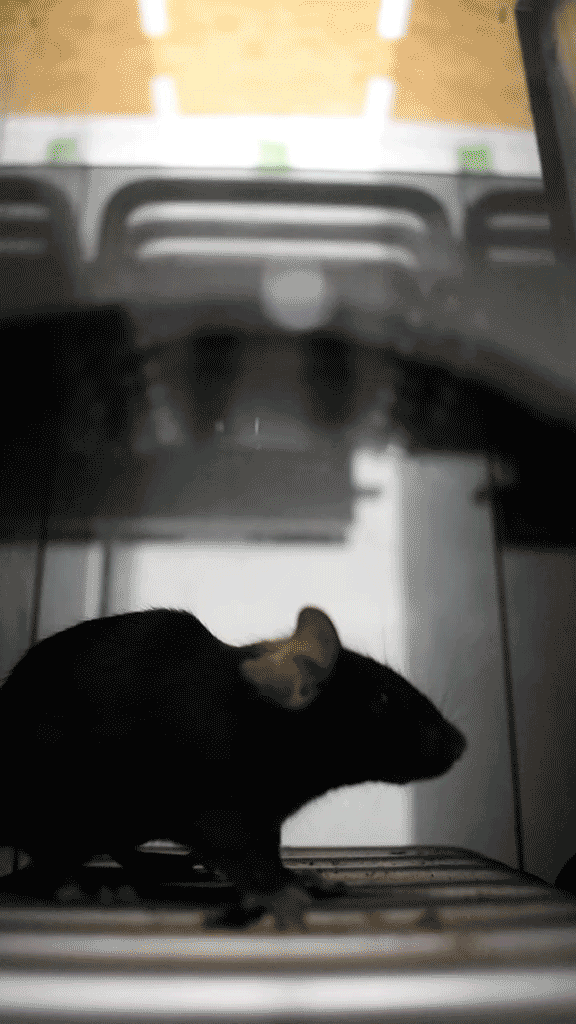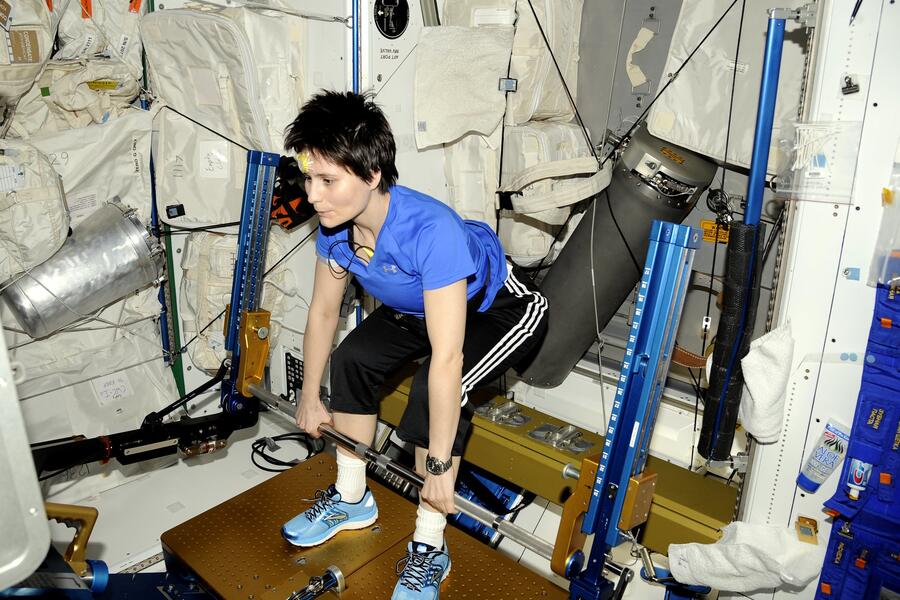- Name
- Roberto Molar Candanosa
- rmolarc1@jh.edu
- Office phone
- 443-997-0258
- Cell phone
- 443-938-1944
Jumping workouts could help astronauts prevent the type of cartilage damage they are likely to endure during lengthy missions to Mars and the moon, a new Johns Hopkins University study suggests.
The research adds to ongoing efforts by space agencies to protect astronauts against deconditioning or getting out of shape due to low gravity, a crucial aspect of their ability to perform spacewalks, handle equipment and repairs, and carry out other physically demanding tasks.
The study, which shows knee cartilage in mice grew healthier following jumping exercises, appears in the journal npj Microgravity.
"Since the next step in human exploration of space is going to Mars and spending long periods of time in permanent bases on the moon, cartilage damage is a really major issue that space agencies need to address despite how very poorly understood it is," said Marco Chiaberge, a Johns Hopkins astrophysicist who led the research. "The positive effect we saw in these mice is huge, and the magnitude of it was unexpected. They can basically make their cartilage thicker if they jump. Maybe astronauts could use similar training before their flight as a preventive measure."
Key Takeaways
- A study in mice found jumping exercises increased knee cartilage thickness by 26%.
- If effective in humans, similar training could be incorporated into pre-flight routines or adapted for use in space, where maintaining strong cartilage is crucial for astronauts’ missions.
- The findings could also inform treatments for arthritis and improve cartilage health in athletes.
Healthy cartilage is essential for pain-free movement, as it cushions joints and decreases bone friction. But cartilage heals slowly and does not regenerate as fast as other tissue. Prolonged periods of inactivity—whether from bed rest, injury, or space travel—can accelerate cartilage breakdown. Space radiation can also accelerate this effect, and European Space Agency experiments have shown evidence of cartilage degradation in astronauts who spend several months aboard the International Space Station.

Image caption: Close-up view of the custom-built apparatus to allow for precise control over jump height and frequency. The study corresponded to roughly five human years and mirrors a progressive overload approach used in human sports performance.
Image credit: Marco Chiaberge / Johns Hopkins University.
"Think about sending somebody on a trip to Mars, they get there and they can't walk because they developed osteoarthritis of the knees or the hips and their joints don't function," said Chiaberge, who also is an astronomer at the Space Telescope Science Institute and the European Space Agency. "Astronauts also perform spacewalks often. They serviced the Hubble Space Telescope five times, and in the future, they will need to spend more time in space and the Moon, where we will build larger telescopes to explore the universe and where they will need to stay as healthy as possible."
Previous research has shown that treadmill running may help slow cartilage breakdown in rodents. The new Johns Hopkins study adds to the evidence by demonstrating that jump-based exercise may prevent articular cartilage loss in knees and could actually improve cartilage health.
The researchers found that mice in a nine-week program of reduced movement experienced cartilage thinning and cellular clustering, both early indicators of arthritis. But mice that performed jump training three times a week showed the opposite effect—thicker, healthier cartilage with normal cellular structure.
The study found the mice with reduced movement had a 14% reduction in cartilage thickness, while those in the jump-training group had a 26% increase compared to a control group. Additionally, the jumping mice had 110% thicker cartilage than the reduced activity group.
Jumping also enhanced bone strength. The team found shin bones in the jumping mice had 15% higher mineral density. Trabecular bone—spongy bone tissue that absorbs impact—was significantly thicker and more robust.
"Leg strength is particularly important and most highly impacted by microgravity, so any procedures that can address multiple aspects of muscle deconditioning, and maybe even reduce the two-hour daily exercise requirement in space, would be most welcome," said author Mark Shelhamer, a professor of otolaryngology at the Johns Hopkins School of Medicine and former NASA Human Research Program Chief Scientist. "The same reasoning applies to bone integrity, including cartilage. There is increasing recognition of the importance of cartilage as a distinct component in bone integrity, and this study contributes to that understanding."
While more research is needed to confirm whether humans would enjoy the same benefits, the findings offer promising information to protect cartilage and bone structure. Jumping exercises could be included in pre-flight routines to prepare joints for space travel, and specially designed exercise machines could help integrate similar workouts in space.
The study could help scientists explore how jump-based training might not only aid patients with arthritis but also boost cartilage health with generally applicable exercises, said author Chen-Ming Fan, a musculoskeletal biologist at Carnegie Science.
The researchers emphasized the need for further research to determine the ideal exercise volume and frequency for preserving and strengthening cartilage. Future work will also explore whether jump training could help reverse cartilage loss and whether the exercise could help astronauts restrengthen their cartilage and recover damage from space flight.
"Now that we got our first clue that one type of exercise can increase cartilage, which was completely unknown before, we could start looking into other types of cartilage. What about the meniscus? Could it also get thicker?" said Fan, who is also an adjunct professor at Johns Hopkins. "This research could help performance-enhancement studies, rather than just focusing on pathological conditions, and help athletes or virtually anyone interested in doing the right exercises to improve their performance."
Other authors are Neelima Thottappillil, Anderson Furlanetto, Dylan Odell, Christine Wang, Stephen Hope, Stephen Smee, Joseph Rehfus, Colin Norman, and Aaron W. James of Johns Hopkins; Anna-Maria Liphardt of Universitätsklinikum Erlangen, Friedrich-Alexander-Universität; Anja Niehoff of German Sport University Cologne; and Marc J. Philippon and Johnny Huard of Steadman Philippon Research Institute.
This research was supported by a Space@Hopkins Seed Grant and by the Carnegie Science Endowment fund.
Posted in Science+Technology
Tagged space exploration, space








